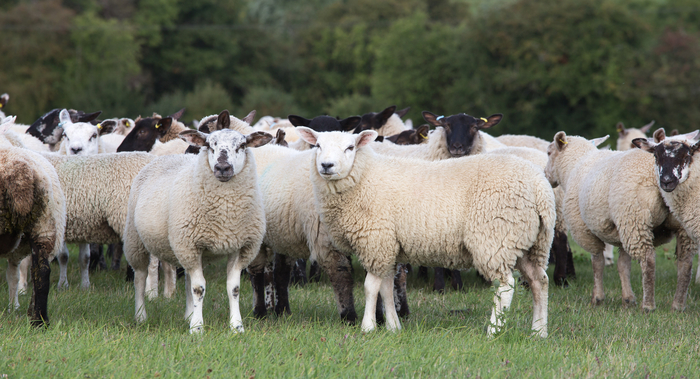A combination supplement protocol pre and post lambing allows ewes to rear lambs with a 4.2kg advantage at weaning
Sheep producers looking to maximise weaning weights and lifetime performance for this season’s lamb crop should adopt a combo supplement protocol for colostrum quality pre lambing and milk production post lambing says Dr Alison Bond, nutritionist for Rumenco.
In a farm trial overseen by SRUC, lambs born from ewes supplemented with Lifeline Lamb and Ewe six weeks before lambing and then transitioned to Rumevite Graze DUP for four weeks post lambing grew 50g per day faster from birth than controls, with a 4.2kg advantage at weaning. Taking in account supplement costs, this yields a return on investment of £14.28 in a set of twins.
The significant increase in lamb performance is due to critical areas in ewe nutrition being met with strategic supplementation during periods of high nutrient demand.
“In the last six weeks of pregnancy, over 70 percent of foetal growth occurs. For context, a lamb weighing 4.5kg at birth only weighs 800g in the 8 weeks prior to being born. It has a huge amount of growth and development to do in a very short space of time to get to a lamb ready for birth,” explains Dr Bond. “This puts a lot of stress on the ewe and pulls large amounts of nutrients from her diet and therefore increases her requirements for energy and protein – doubling for those carrying twins.”
During this time, the udder also develops and the feeding regime influences colostrum quality. According to Dr Bond, feeding Lifeline Lamb and Ewe in that critical six week window pre lambing not only ensures protein and energy demands are being met for foetal development, but also boosts colostrum quality.
“Feeding a well-balanced, energy and quality protein bucket including minerals, vitamins and trace elements during this rapid period of foetal development can significantly increase immuno-globulin levels in the colostrum,” says Dr Bond.
Immunoglobulin content is an important measure of colostrum quality that infers passive immunity to disease in young lambs. In independent trial work by SAC, feeding innovatively balanced energy plus protein lick including minerals, vitamins and trace elements pre lambing was found to increase colostrum immunoglobulin content by 25% more than a standard energy bucket.
“Healthier lambs have increased feed intake and growth rate, show improved early vigour and general health, thrive and are potentially less likely to suffer from conditions such as coccidiosis, hypothermia and mis-mothering,” explains Dr Bond.
Lactation post lambing yields ROI
To optimise lamb performance, feeding to support foetal development and colostrum production is only half the battle, says Dr Bond, with the first six weeks of lamb growth post lambing being 100 percent dependent on milk production.
“Seventy-five percent of a ewe’s milk production takes place in the eight weeks post lambing, with peak milk production taking place in weeks three and four,” says Dr Bond.
During this period, a typical ewe will produce 1.5-3.0 litres per day, with similar production equivalent being to a high yielding dairy cow. In a SRUC farm trial, the added milk production achieved from feeding Rumevite Graze DUP, a supplement high in quality by-pass protein and energy with rumen protected amino acids, resulted in lamb weaning weight advantages of 2.29kg per lamb. Taking into account the cost of feeding the supplement for four weeks at a daily intake of 101g per ewe and a liveweight price of £1.70 per kg, the return on investment of the extra lamb gain in a set of twins was £5.33 when feeding Rumevite Graze DUP alone. When including cost of Lifeline Lamb and Ewe and added performance output, the return on investment for a set of twins is £14.28.
Supporting lamb lifetime performance
Aside from yielding heavier lambs and greater financial returns, meeting flock nutrient requirements pre and post lambing supports the lifetime performance of the flock and the farming business.
Lifeline Lamb and Ewe and Rumevite Graze DUP supplements are fortified with vitamins and minerals, providing high levels of both selenium and vitamin E – critical to lamb and ewe health.
“Taking a strategic approach to ensuring flock nutrient requirements are met during these high demand periods will not only yield heavier lambs at weaning, but lambs that will have the health and nutrient status to achieve their genetic potential,” concludes Dr Bond. “Whether they are going back into production as replacements or being sent to the abattoir, their increased performance throughout their lifetime will help serve the future of the farming business.”


